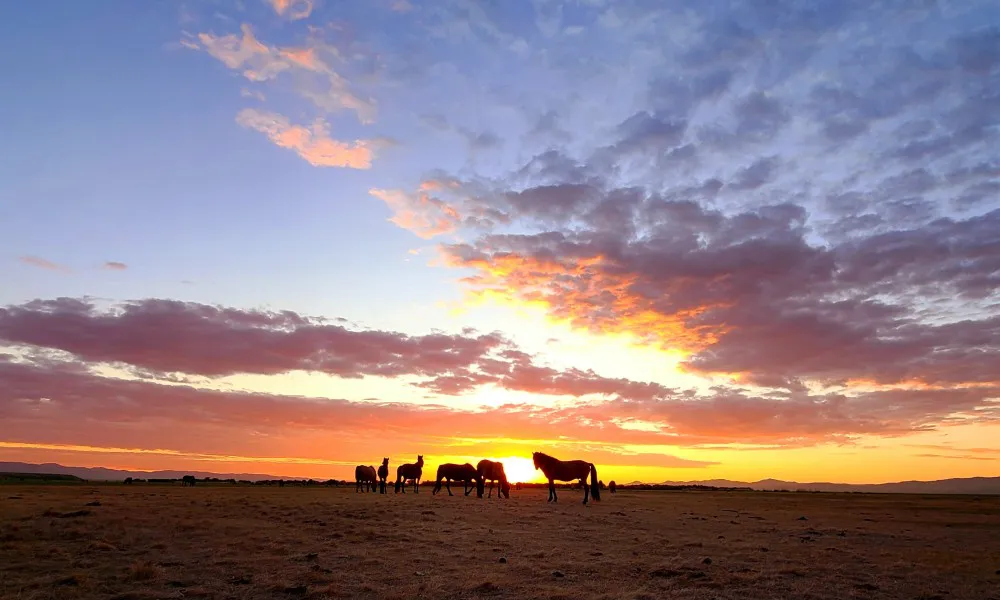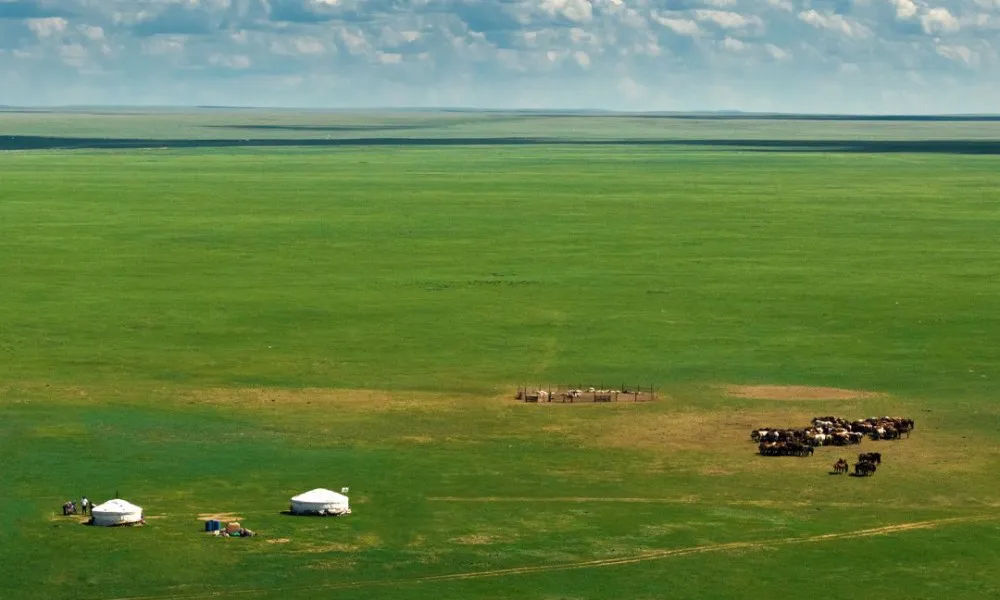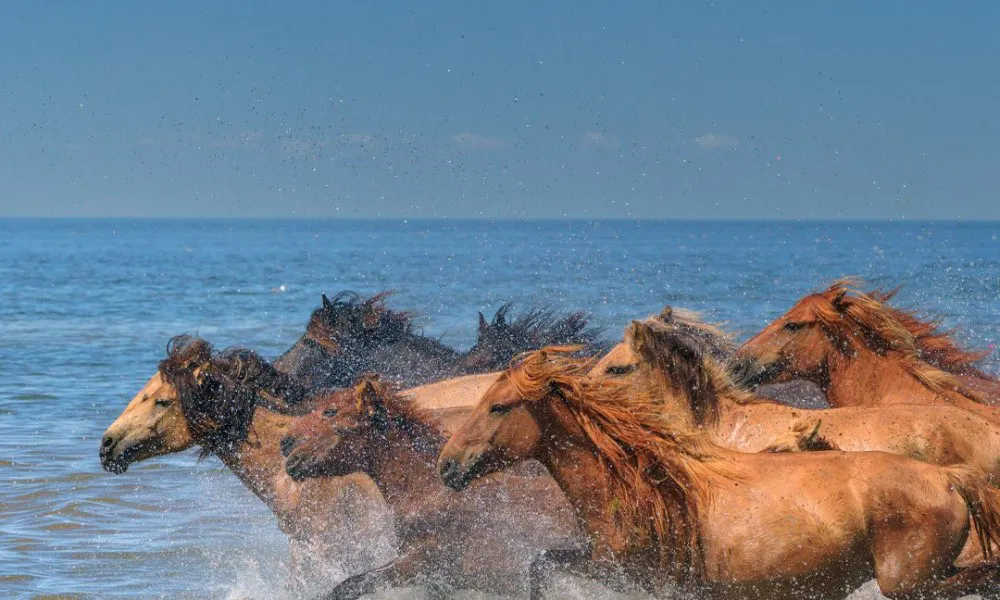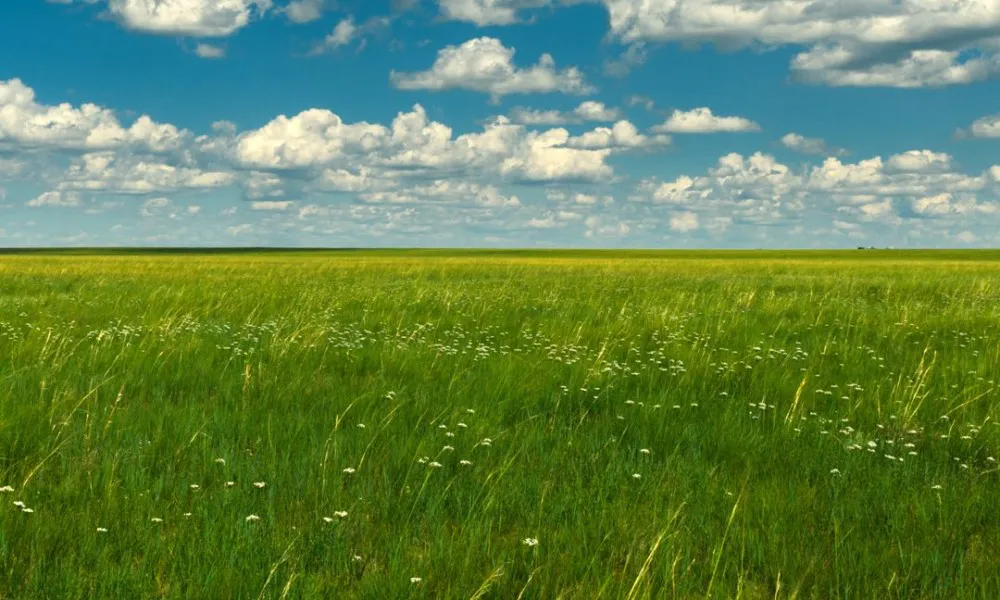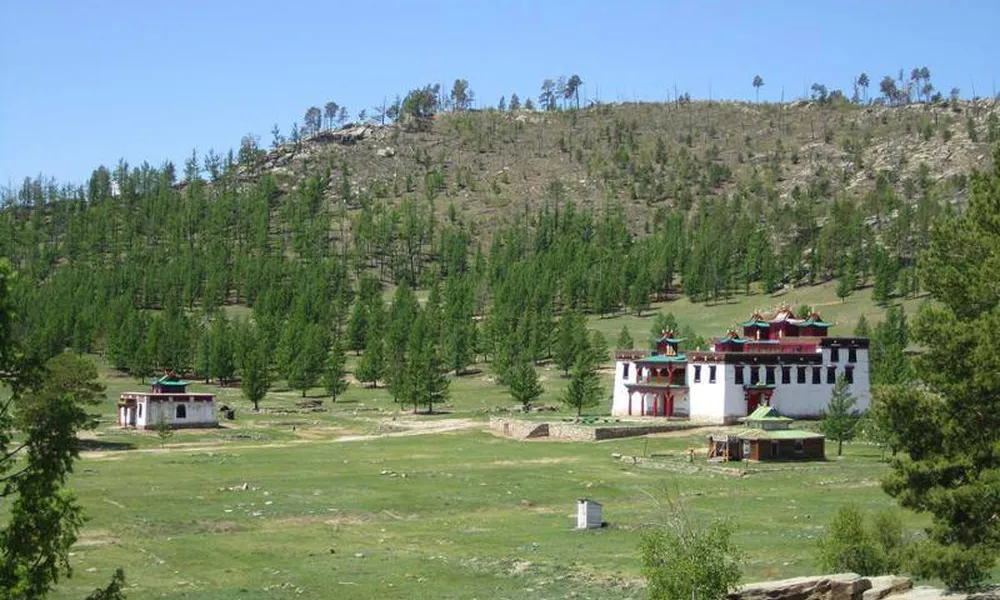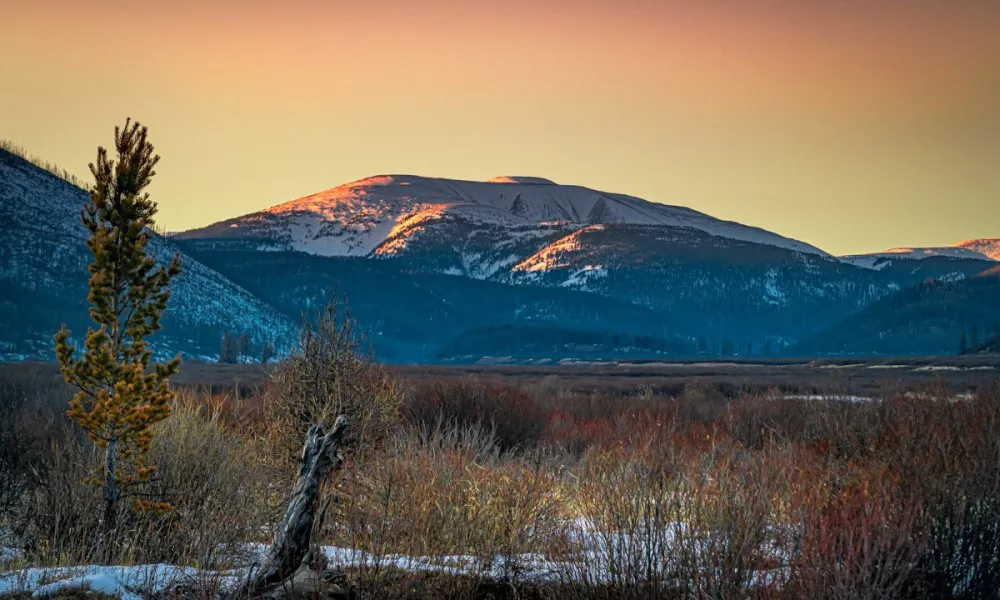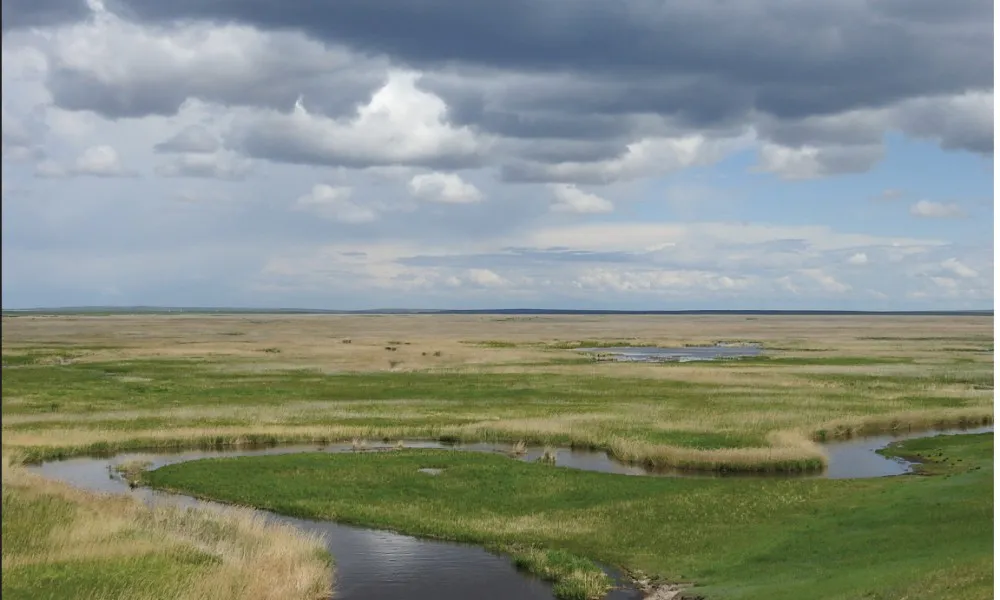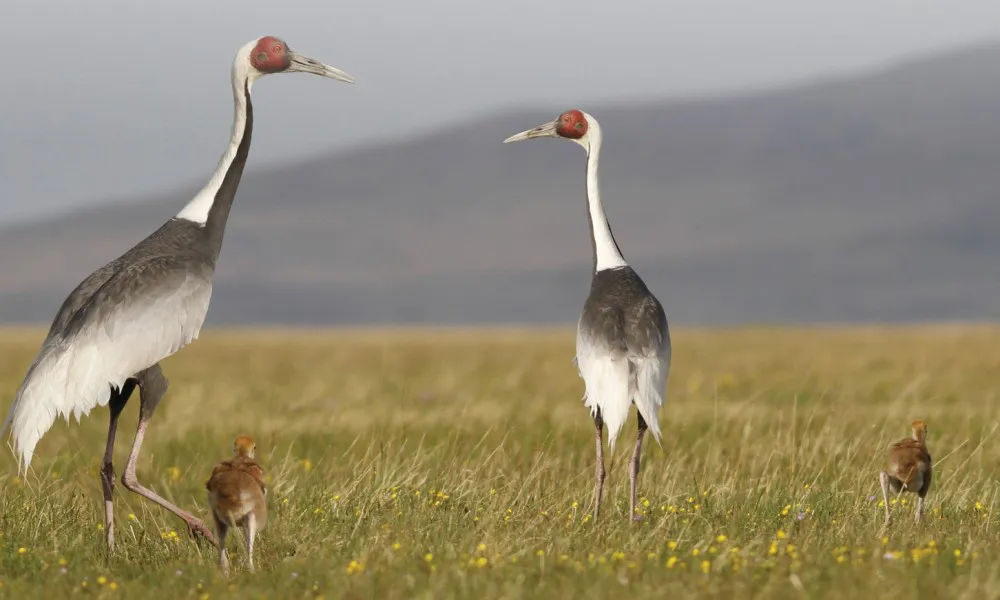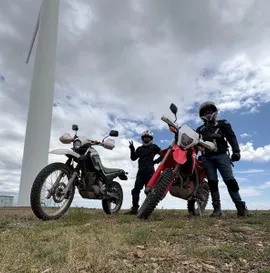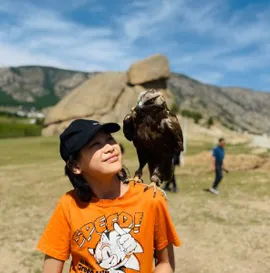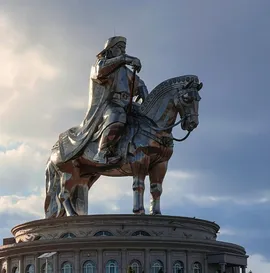Eastern Mongolia
Eastern Mongolia is unlike any other part of the country, defined by vast, uninterrupted grasslands, sacred rivers, and deep historical roots. While the north is forested, the west mountainous, and the south arid, the east offers open steppe, rare wildlife, and cultural landmarks tied to Chinggis Khaan. It’s his birthplace and the setting for much of the Mongolian Secret History, where rivers, ridges, and sacred mountains trace his early life. Khentii province, in particular, is the only province whose capital is named after Chinggis Khaan himself, and its landscapes appear throughout the sacred chronicle of his rise. Gazelles roam freely across the Menen Steppe, cranes nest in wetlands, and herding families uphold traditions like silversmithing and sunrise rituals atop sacred peaks. It’s a region of quiet power, ecological purity, and ancestral depth.
Menen Grassland Steppe & Buir Lake
Menen Steppe and Buir Lake form the wild heart of Eastern Mongolia. The Menen Steppe, stretching over 90 km, is one of the world’s last untouched grasslands, where thousands of Mongolian gazelles roam freely across feather-grass plains. Just east, Buir Lake shimmers on the border with China one of Mongolia’s largest freshwater lakes and part of the country’s vast network of over 3,000 lakes. Rich in fish and surrounded by wetlands, it attracts cranes, swan geese, and other migratory birds. Visitors can ride across the open steppe, photograph wildlife, camp by the lakeshore, fish, birdwatch, and experience the quiet beauty of Mongolia’s eastern frontier.
Burkhan Khaldun & Baldan Bereeven Monastery
Are two of Eastern Mongolia’s most sacred sites, where shamanism and Buddhism coexist. Burkhan Khaldun, nestled in the Khan Khentii mountains one of Mongolia’s three major mountain system, is believed to be the birthplace and burial site of Chinggis Khaan. Revered in the Mongolian Secret History, it’s now a UNESCO World Heritage Site and pilgrimage destination, where visitors hike to Ovoos and offer prayers. Nearby, Baldan Bereeven Monastery sits in a tranquil valley surrounded by sacred peaks. Founded in 1654, it once housed thousands of lama monks and remains a major Buddhist center, with restored temples, cliff carvings, and spiritual art. Together, these sites offer a rare glimpse into Mongolia’s layered spiritual heritage.
Mongol Daguur - Landscapes of Dauria
Mongol Daguur is a vast biosphere reserve in Eastern Mongolia, part of a transboundary ecoregion shared with Russia and China. Covering over 8 million hectares of steppe, wetlands, and low mountains, it’s a haven for rare wildlife including white-naped cranes, swan geese, and great bustards. Recognized as a UNESCO World Heritage Site and Ramsar Wetland, the area supports both biodiversity and traditional nomad herding. Visitors can birdwatch during migration seasons, photograph wildlife, camp in open landscapes, and witness how nomadic life and conservation coexist in one of Mongolia’s most ecologically rich regions.


